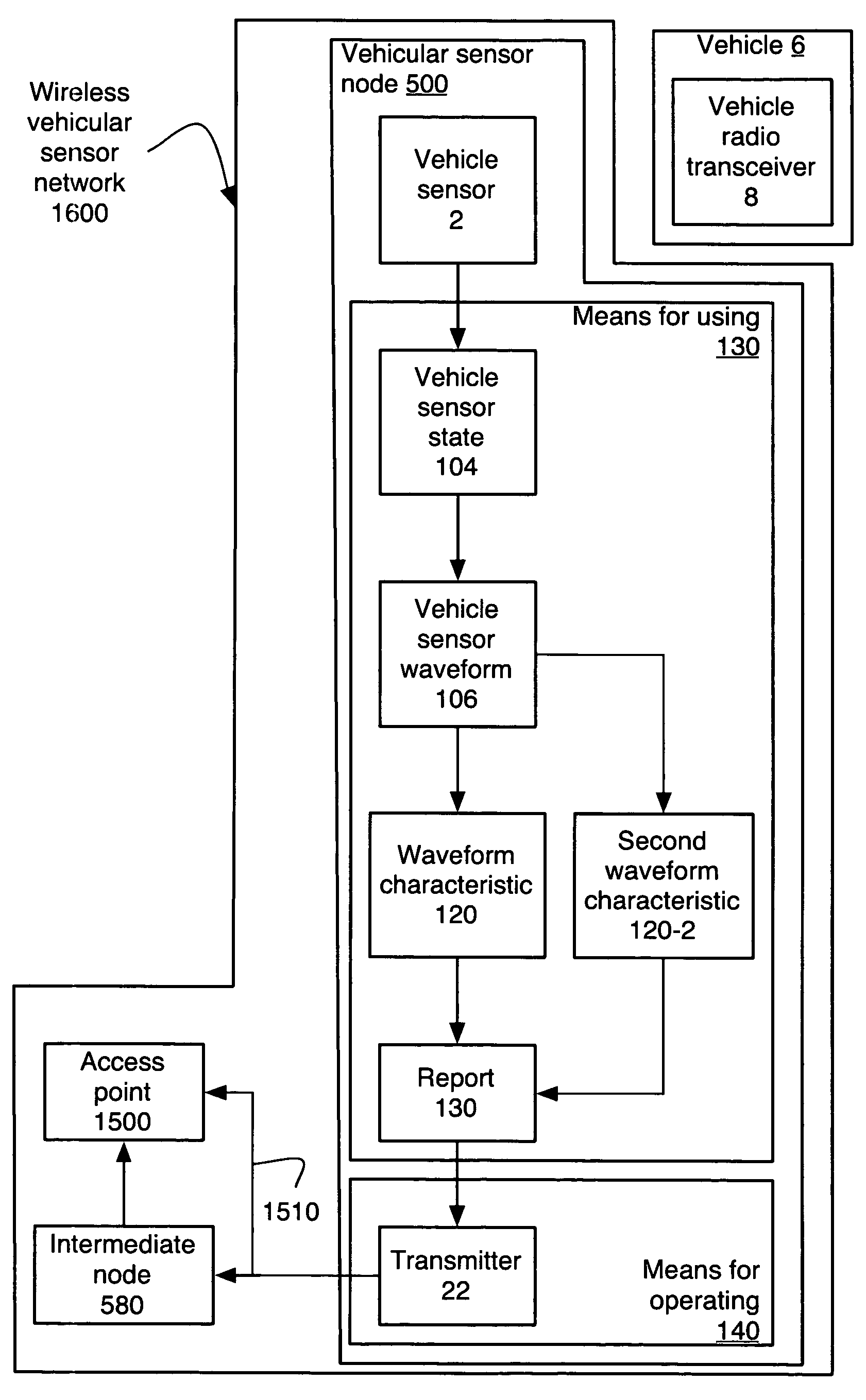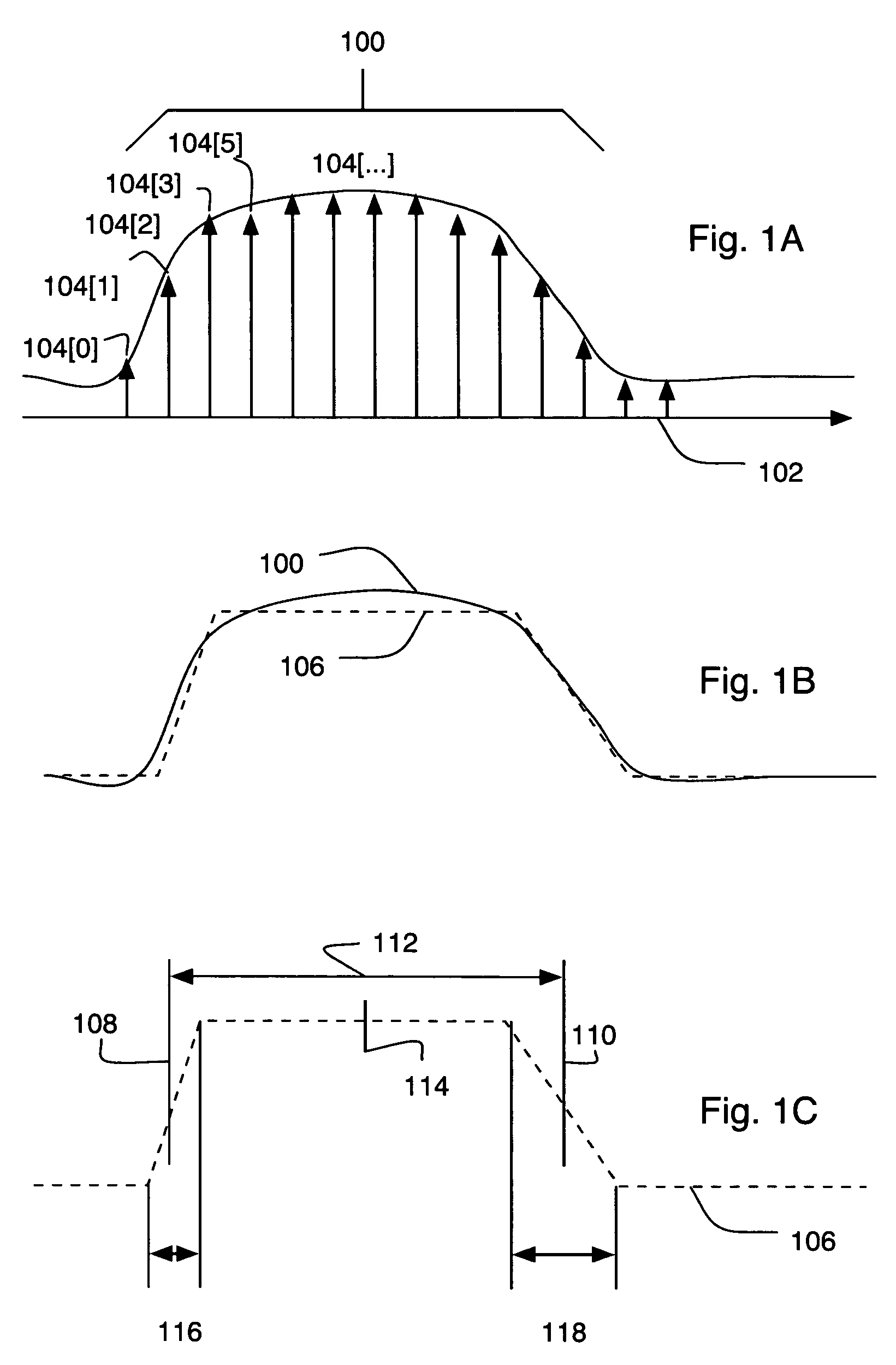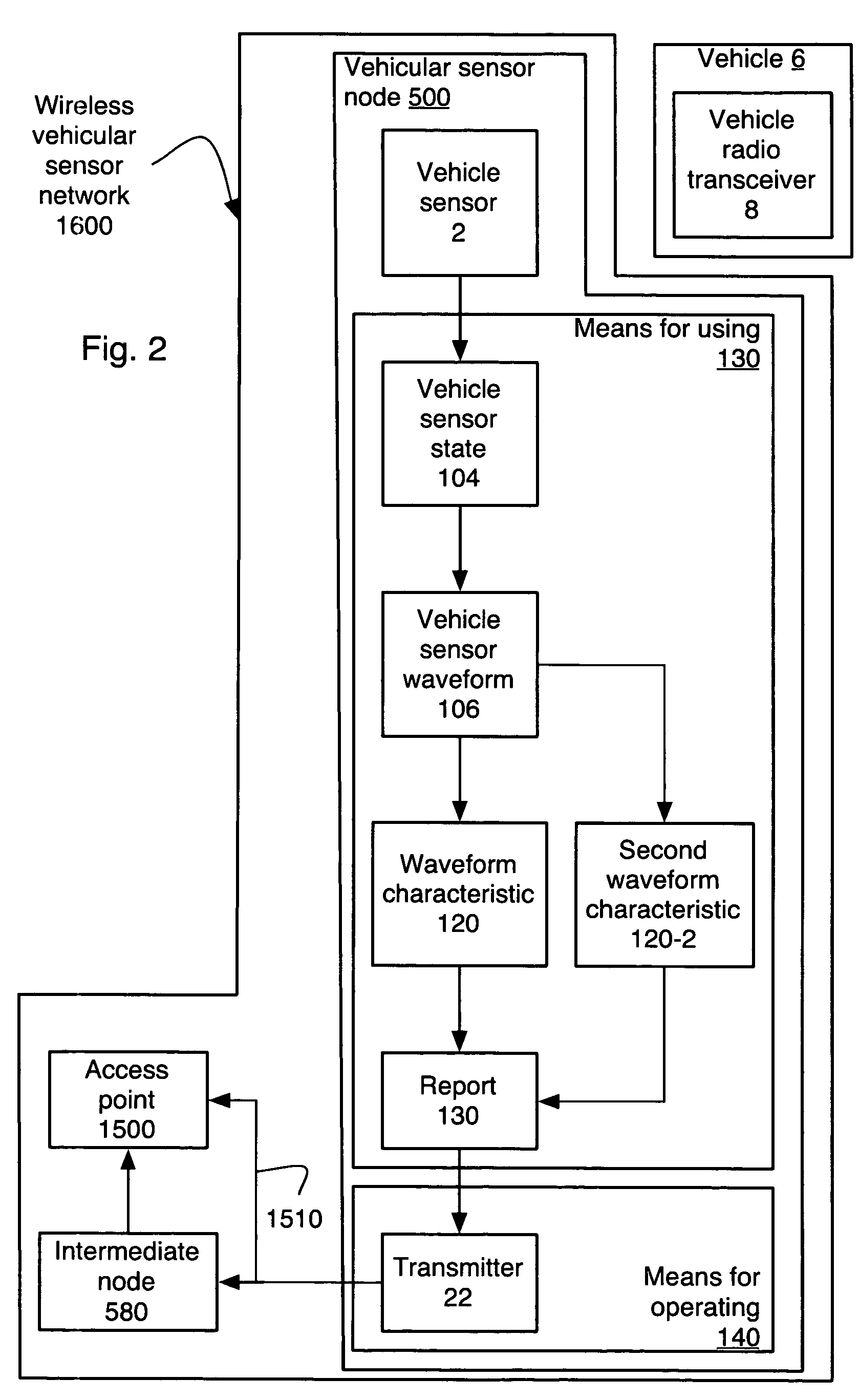Method and apparatus reporting a vehicular sensor waveform in a wireless vehicular sensor network
a vehicular sensor and wireless technology, applied in the direction of variable traffic instructions, control of traffic signals, special data processing applications, etc., can solve the problems of not being able to report the waveform of the vehicle sensor, not being able and/or difficult to use in other applications, and not being able to report the presence of a vehicle waiting
- Summary
- Abstract
- Description
- Claims
- Application Information
AI Technical Summary
Benefits of technology
Problems solved by technology
Method used
Image
Examples
Embodiment Construction
[0038]This invention relates to wireless vehicular sensor networks, in particular, to the reporting of the waveforms of these sensors due to the presence of motor vehicles. The presence of a motor vehicle will refer to its presence whether stationary and / or in motion relative to the vehicular sensor node. By way example, an automobile passing near a vehicular sensor node at 20 Kilometers Per Hour (kph) will have a presence. That same automobile parked near a second vehicular sensor node will also have a presence. The invention reports at least one waveform characteristic of a vehicular sensor waveform in a wireless vehicular sensor network. The vehicular sensor waveform is the result of a vehicle passing near a wireless vehicular sensor node. The waveform characteristic may be the rising edge, the falling edge, the waveform duration, the waveform midpoint, the rising edge slope, the falling edge slope, the number of zero crossings, and / or the number of zero-crossings of the time der...
PUM
 Login to View More
Login to View More Abstract
Description
Claims
Application Information
 Login to View More
Login to View More - R&D
- Intellectual Property
- Life Sciences
- Materials
- Tech Scout
- Unparalleled Data Quality
- Higher Quality Content
- 60% Fewer Hallucinations
Browse by: Latest US Patents, China's latest patents, Technical Efficacy Thesaurus, Application Domain, Technology Topic, Popular Technical Reports.
© 2025 PatSnap. All rights reserved.Legal|Privacy policy|Modern Slavery Act Transparency Statement|Sitemap|About US| Contact US: help@patsnap.com



